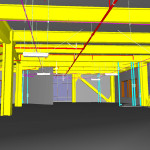 In recent years, landscape architecture has evolved significantly, reflecting changing lifestyles and preferences for outdoor living. Today, outdoor spaces are not just about aesthetics but also functionality and sustainability. As we delve into the trends shaping modern landscape architecture, it’s evident that creating outdoor living spaces that seamlessly blend with the natural environment while providing comfort and functionality is paramount.
In recent years, landscape architecture has evolved significantly, reflecting changing lifestyles and preferences for outdoor living. Today, outdoor spaces are not just about aesthetics but also functionality and sustainability. As we delve into the trends shaping modern landscape architecture, it’s evident that creating outdoor living spaces that seamlessly blend with the natural environment while providing comfort and functionality is paramount.
- Embracing sustainability: Sustainability is no longer a buzzword but a fundamental principle in modern landscape architecture. Designers are integrating sustainable practices such as native plantings, rainwater harvesting systems, and permeable pavements to minimize environmental impact and promote biodiversity. Incorporating sustainable materials and techniques not only reduces the ecological footprint but also enhances the overall resilience of outdoor spaces.
- Multi-functional design: Modern landscape architecture emphasizes multi-functional design to maximize the utility of outdoor spaces. Gone are the days of traditional lawns; instead, designers are creating versatile spaces that serve multiple purposes, such as outdoor kitchens, dining areas, fire pits, and lounging zones. By blurring the boundaries between indoor and outdoor living, these spaces become extensions of the home, perfect for entertaining, relaxation, and recreation.
- Integration of technology: Technology is revolutionizing landscape architecture, offering innovative solutions for irrigation, lighting, and automation. Smart irrigation systems, LED lighting, and programmable outdoor audiovisual systems are becoming increasingly popular, allowing homeowners to control and monitor their outdoor spaces remotely. Integrating technology enhances convenience, energy efficiency, and security while adding a futuristic touch to outdoor living environments.
- Biophilic design: Biophilic design principles are gaining prominence in landscape architecture, emphasizing the innate connection between humans and nature. Incorporating elements such as natural materials, water features, and green walls fosters a sense of well-being and tranquility. By mimicking natural environments, biophilic design encourages relaxation, reduces stress, and enhances overall mental and physical health.
- Outdoor wellness spaces: With a growing emphasis on health and wellness, outdoor spaces are being designed to promote physical activity, relaxation, and mindfulness. From yoga decks and meditation gardens to fitness zones and therapeutic landscapes, designers are creating outdoor wellness spaces that cater to diverse needs and preferences. These spaces provide opportunities for exercise, reflection, and rejuvenation, contributing to holistic well-being.
- Sustainable landscaping: Sustainable landscaping practices are gaining traction, focusing on water conservation, soil health, and biodiversity. Designers are incorporating xeriscaping, green roofs, and edible gardens to minimize water usage, improve soil quality, and support local ecosystems. By choosing drought-tolerant plants, implementing efficient irrigation systems, and utilizing organic gardening methods, sustainable landscapes thrive in harmony with the natural environment.
- Adaptive reuse and regenerative design: Adaptive reuse and regenerative design principles are guiding landscape architects toward repurposing existing structures and landscapes to minimize waste and maximize resource efficiency. By revitalizing underutilized spaces, such as brownfields or industrial sites, designers can create vibrant outdoor environments that celebrate the site’s history while meeting contemporary needs. Regenerative design aims to restore and enhance ecosystem services, creating resilient landscapes that adapt to changing environmental conditions.
- Artistic expression and creativity: Artistic expression and creativity play a pivotal role in modern landscape architecture, allowing designers to imbue outdoor spaces with beauty, meaning, and cultural significance. From sculptural installations and murals to interactive artworks and immersive experiences, artistic elements add layers of interest and emotion to outdoor environments. By collaborating with artists and artisans, landscape architects create unique and memorable spaces that engage the senses and inspire imagination.
- Climate resilience: With the increasing frequency of extreme weather events and climate change impacts, landscape architects are prioritizing climate resilience in their designs. This includes strategies such as flood mitigation, stormwater management, and heat island reduction. By incorporating resilient features like bioswales, green roofs, and permeable pavements, outdoor spaces can better withstand environmental challenges and support long-term sustainability.
- Community engagement: Modern landscape architecture emphasizes community engagement and participatory design processes to ensure that outdoor spaces reflect the needs and aspirations of local residents. Through workshops, charrettes, and public consultations, designers collaborate with communities to co-create inclusive and culturally relevant landscapes. This approach fosters a sense of ownership and stewardship among residents, resulting in spaces that are truly valued and cared for.
- Accessible design: Accessibility is a key consideration in modern landscape architecture, ensuring that outdoor spaces are inclusive and welcoming to people of all ages and abilities. Designers are integrating universal design principles such as wheelchair ramps, tactile paving, and seating areas with varied heights to accommodate diverse users. By prioritizing accessibility, outdoor environments become more equitable and enjoyable for everyone.
- Biodegradable materials: In response to concerns about environmental pollution and waste, landscape architects are increasingly using biodegradable materials in their designs. From bioplastic mulch films to bamboo-based composites, these materials offer alternatives to traditional plastics and synthetic products. By choosing biodegradable options, outdoor spaces can reduce their environmental footprint and contribute to a more circular economy.
In conclusion, modern landscape architecture is evolving to meet the demands of contemporary living, with a focus on sustainability, functionality, and aesthetics. By embracing innovative trends and design principles, landscape architects have the opportunity to create outdoor living spaces that enrich the lives of individuals, communities, and the environment.
Ready to transform your outdoor space into a haven of beauty and functionality? Contact McNeil Engineering for comprehensive landscape architecture and design services. From sustainable practices to cutting-edge technology, we’ll help bring your vision to life and create outdoor living spaces that exceed your expectations. Visit our website to learn more about our services and get started on your landscape transformation today!








